blog»Business Strategy»The Secrets Behind Depop Gen Z Marketing: UGC, Identity, and Community
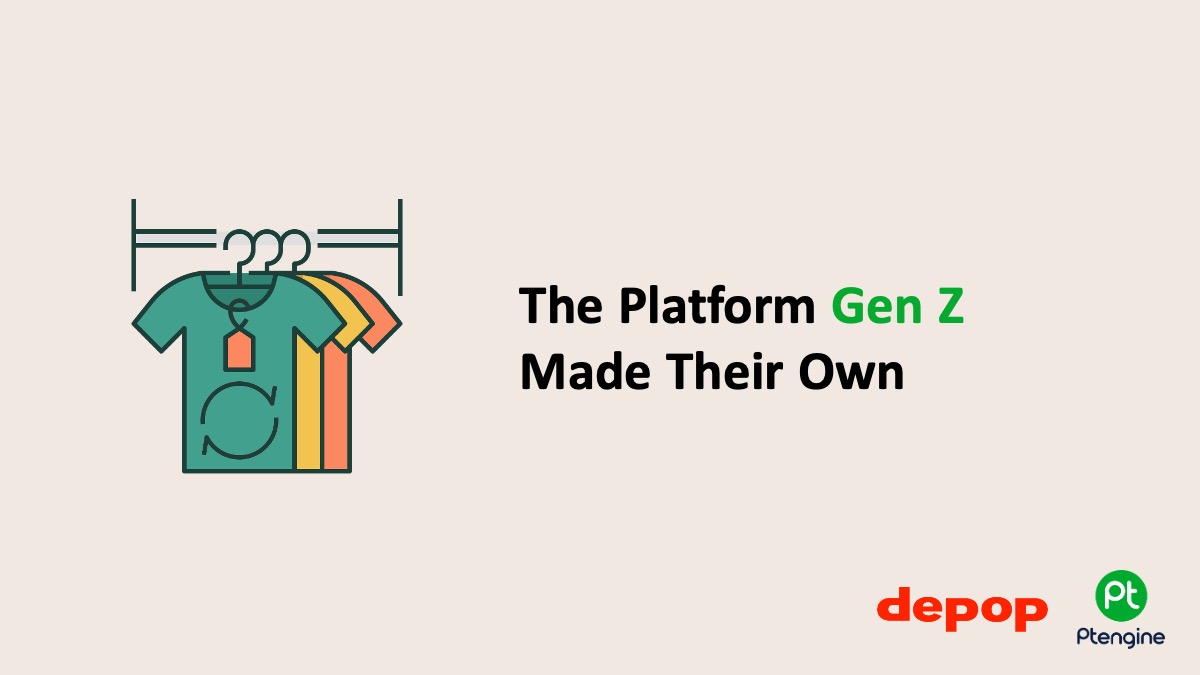
The Secrets Behind Depop Gen Z Marketing: UGC, Identity, and Community
2025/05/27
You can read this article in about 20 minutes
Introduction
Depop isn’t just a resale platform—it’s a cultural movement wrapped in a marketplace.
Originally launched in the UK, Depop has become one of the most popular platforms for Gen Z to buy and sell fashion. But its success wasn’t built on speed, convenience, or traditional advertising. It grew through community, creativity, and self-expression.

To understand Depop’s rise, you need to think less like Amazon and more like Instagram. The platform feels more like a social feed than an online store. It encourages users to express their identity, connect with others, and turn their closets into micro-businesses.
In this article, we’ll break down how Depop used Gen Z-first branding, user-generated content, and product-led community building to fuel its growth. You’ll see real tactics, a standout campaign, and most importantly—actionable lessons for your own brand or marketplace.
1. Built like a social network
Depop didn’t feel like a store. It felt like scrolling through your favorite creator’s Instagram feed.
Instead of filters, dropdowns, and bland grids, Depop built its platform around familiar social patterns. Users could like listings, follow sellers, and build personal profiles. Each item was a post. Each seller had a feed. And each interaction was designed to feel casual, visual, and personal.
This format made shopping feel less transactional and more expressive. Browsing wasn’t just about finding a hoodie—it was about finding a vibe, a look, or someone with your taste. And it worked. Gen Z users didn’t just use Depop to buy and sell clothes—they used it to show off their style and connect with others.
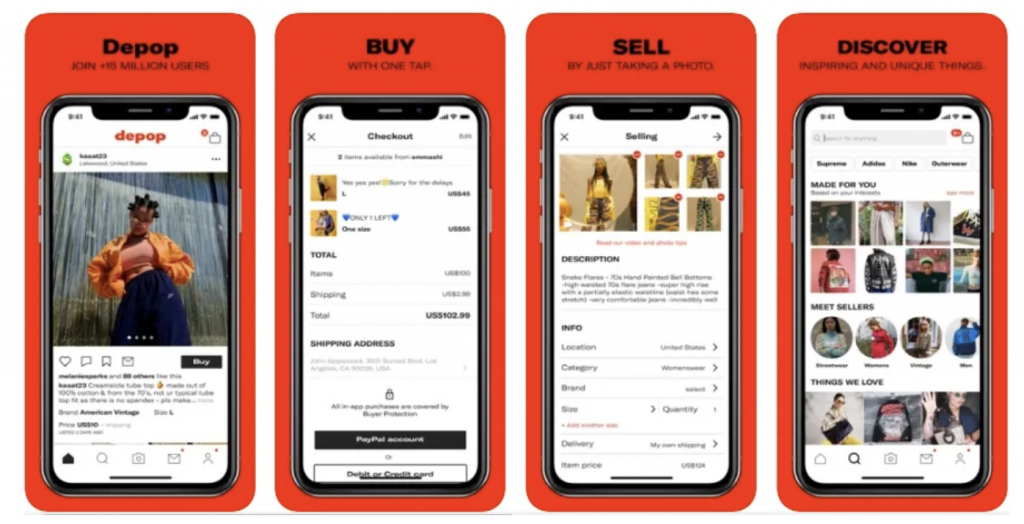
By borrowing the mechanics of social media, Depop turned its marketplace into a community. The more people engaged, the better the experience became. And the more personal it felt, the harder it was to leave.
What marketers can learn:
- People—especially Gen Z—want experiences, not just products.
- Mimic the platforms your audience already uses. If they love Instagram or TikTok, borrow those formats.
- Focus on creating features that drive connection, not just conversion.
- Turning your product into a “social space” builds stickiness and organic growth loops.
Depop’s structure shows that making something feel social isn’t just a design choice—it’s a growth strategy.
2. Gen Z-first branding
Depop doesn’t talk like a brand. It talks like a friend.
Everything about Depop’s branding—from the tone of voice to the photography style—is built for Gen Z. It’s not polished. It’s not overly designed. It feels raw, inclusive, and authentic. That’s exactly the point.
While most e-commerce platforms focus on sleek perfection, Depop leans into self-expression. Their visuals reflect real people, DIY outfits, and creative styling. Campaigns are less about selling fashion, and more about celebrating identity—no matter how niche or weird or bold that identity might be.
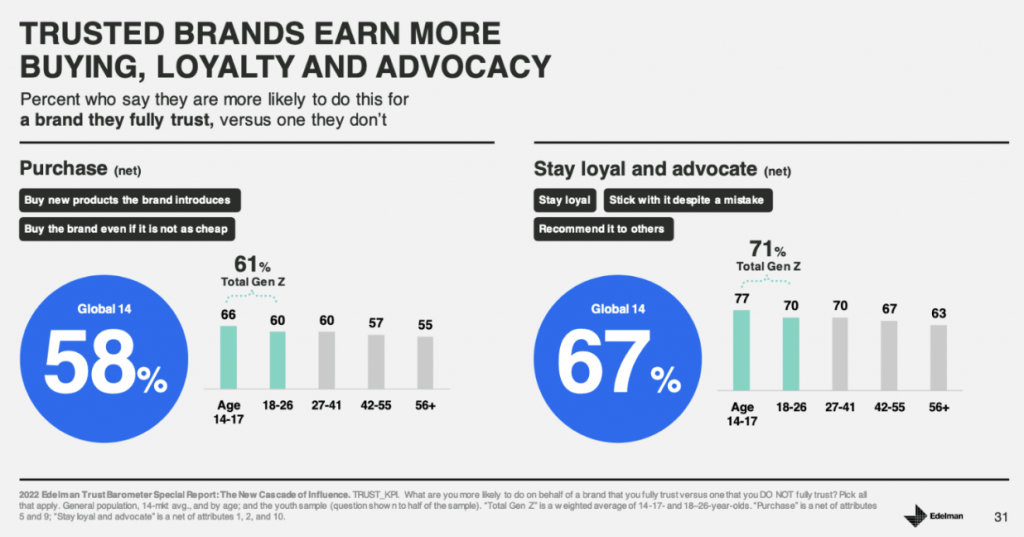
And it goes beyond aesthetics. Depop aligns with the values Gen Z actually cares about: sustainability, individuality, and self-expression. Instead of selling trends, they promote reuse. Instead of pushing mass appeal, they spotlight microcultures. The brand doesn’t chase Gen Z—it reflects them.
That’s why Depop doesn’t just have users. It has fans.
What marketers can learn:
- Gen Z doesn’t respond to polished perfection—they respond to realness.
- Brand voice matters. Drop the corporate tone and speak like your audience.
- Align your message with values, not just features.
- Instead of targeting a “demographic,” create space for individuality.
Depop proves that branding isn’t about looking good—it’s about feeling right to the people you’re speaking to.
3. User-generated content drives everything
Depop doesn’t create its own content. Its users do that—every single day.
When someone lists an item on Depop, they’re not just uploading a product photo. They’re curating a look, choosing a vibe, and telling a story. Whether it’s mirror selfies, street shots, or flat lays with stickers and filters, every listing feels like a personal brand moment.
That’s the magic of Depop: the product is the platform, but the content is 100% user-driven. This creates an endless stream of authentic, relatable content that constantly refreshes itself—without a big creative budget.

And it works. Shoppers trust other users more than polished ads. They relate to real photos, real people, and real style. UGC turns browsing into inspiration and sellers into influencers.
Best of all? This content lives beyond Depop. Sellers promote their items on TikTok, Instagram, and YouTube. Every listing is a chance to reach new audiences organically. Depop didn’t need to create content—it just built a platform where others wanted to.
What marketers can learn:
- Your customers are your best content creators—make it easy and rewarding for them to share.
- Authenticity always beats stock photos, especially with Gen Z.
- Build tools or templates that help users turn content into connection.
- UGC isn’t just good for trust—it’s a free growth channel if you design for it.
Depop shows that if you build a platform people love using, they’ll also love promoting it—without being asked.
4. Powered by creators and micro-influencers
Depop didn’t partner with celebrities. It partnered with creators who looked like the users already on the app.
From fashion YouTubers and thrift-flipping TikTokers to niche Instagram stylists, Depop grew through the voices of micro-influencers. These creators didn’t just promote the platform—they lived on it. They built shops, styled outfits, made how-to videos, and showed their followers how to make money selling their clothes.
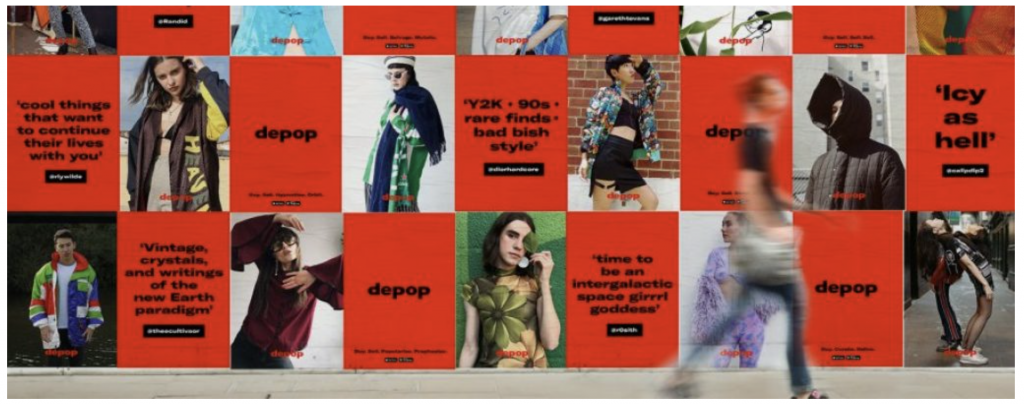
And that authenticity made the difference. These weren’t paid promotions in the traditional sense—they were native stories from people who were genuinely passionate about the platform. For their followers, it didn’t feel like an ad. It felt like a recommendation from a trusted friend.
Depop also made it easy for these creators to build a brand inside the platform. Each shop felt like a personal storefront. Sellers could name their shop, set a vibe, and grow a loyal customer base—just like influencers do on Instagram or TikTok.
By empowering creators to succeed, Depop turned them into a built-in marketing channel.
What marketers can learn:
- Micro-influencers often outperform big names in terms of trust and engagement.
- Choose creators who use your product, not just promote it.
- Give influencers tools to build their own brand within your brand.
- Make the product itself the proof—it shouldn’t need much selling.
Depop shows that the best influencer campaigns aren’t campaigns at all—they’re just great user stories with reach.
5. Community > convenience
Depop isn’t fast. It isn’t automated. It’s not even the cheapest option. But none of that matters—because it’s got something Amazon never will: culture.
Buying on Depop is slower by design. You might wait for a seller to respond. You might message back and forth about sizing or shipping. But that interaction is the experience. It feels like buying from a person, not a warehouse.
The same goes for selling. Users curate their shop, style their photos, and even chat with buyers. It’s a vibe, not just a transaction. That sense of personal connection builds trust—and more importantly, loyalty.
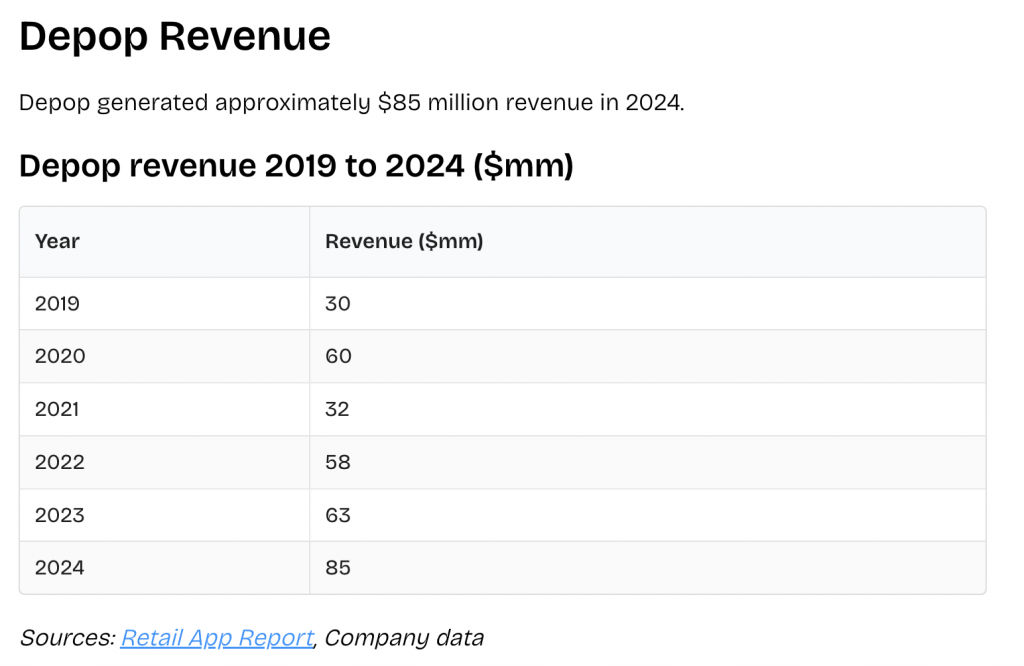
There’s also a shared mission baked in. Depop’s community thrives on sustainability, reuse, and individuality. Everyone feels like they’re part of something bigger than just shopping. It’s not about getting things fast—it’s about getting things with meaning.
Depop doesn’t compete on convenience. It wins with identity and community.
What marketers can learn:
- Don’t try to out-Amazon. Focus on what makes your experience unique.
- Slow isn’t always bad—if it’s meaningful, users will wait.
- Build features that highlight the human side of your platform.
- Shared values and purpose create stronger loyalty than speed or price.
Depop proves that if your users feel like they belong, they’ll come back—regardless of how “efficient” the experience is.
6. Real-world campaign: “I Got It On Depop”
In May 2023, Depop launched its UK campaign, “I Got It On Depop,” aiming to inspire shoppers to choose secondhand fashion. The campaign highlighted the sense of community found on Depop and captured the excitement of sharing unique secondhand purchases.
The campaign featured out-of-home (OOH) advertising in prime London retail spaces like Oxford Street and Westfield. It also included influencer partnerships, audio promotions, and a music and marketplace community event.

By leveraging the natural language and pride expressed by its community, Depop created a campaign that resonated authentically with its audience. The phrase “I Got It On Depop” was already part of the community’s vernacular, making the campaign feel organic and community-driven.
What marketers can learn:
- Leverage existing community language: Using phrases already popular within your user base can make campaigns feel more authentic.
- Multi-channel approach: Combining OOH advertising with digital and community events can amplify reach and engagement.
- Highlight user pride: Showcasing the pride users have in their purchases can reinforce brand loyalty and encourage word-of-mouth promotion.
Depop’s “I Got It On Depop” campaign demonstrates the power of community-driven marketing and the effectiveness of aligning brand messaging with user sentiment.
7. Lessons for modern brands and marketplaces
Depop didn’t win Gen Z by optimizing conversion rates or running flash sales.
It won by understanding what this generation actually cares about—identity, creativity, and community—and building its entire platform around that.
If you’re building a brand, product, or marketplace today, here are the core takeaways:
1. Build for behavior, not just function
Depop mirrored the social platforms Gen Z already used. It didn’t feel like something new to learn—it felt familiar, fun, and personal. That lowered friction and boosted engagement right from the start.
Design your product experience to match how your users already think and behave.
2. Let users do the talking
Depop’s users created the listings, the photos, the styling—and even the marketing. The app simply gave them the tools to shine. When your users feel ownership, they naturally promote you.
Empower users to generate content, stories, and momentum for your brand.
3. Work with creators who are already believers
Depop didn’t need celebrities. It found creators who loved the platform and helped them grow. These micro-influencers brought trust, relatability, and lasting impact.
Choose creators who already live your brand. Their content will land deeper.
4. Prioritize community over convenience
Depop isn’t the fastest or most scalable marketplace—but it’s sticky because it feels personal. The conversations, the culture, the values… they all create emotional connection.
Community isn’t a feature. It’s a reason people choose you—and stay.
5. Campaigns should sound like your users, not your brand team
With “I Got It On Depop,” the company simply amplified what users were already saying. That’s why it worked. It didn’t disrupt the conversation—it joined it.
Your next great campaign idea might already be in your users’ posts or comments.
Depop didn’t just sell clothes—it sold belonging. And that’s something every modern brand should aim for.
Conclusion
Depop didn’t succeed by acting like a traditional marketplace. It won by acting like its users.
Everything about the platform—from its social layout to its unfiltered branding—was built with Gen Z in mind. Not just their buying habits, but their values, behaviors, and desire for self-expression. It wasn’t about optimizing for transactions. It was about building a space where identity and commerce could exist side by side.
That’s what makes Depop so powerful. It doesn’t just facilitate buying and selling—it enables creativity, connection, and culture.
If you’re a marketer looking to reach younger audiences, the message is clear: Forget the funnel. Focus on the experience. Make it feel real, relevant, and community-driven.
Because in the end, Gen Z doesn’t just want to shop. They want to belong. And the brands that understand that—win.